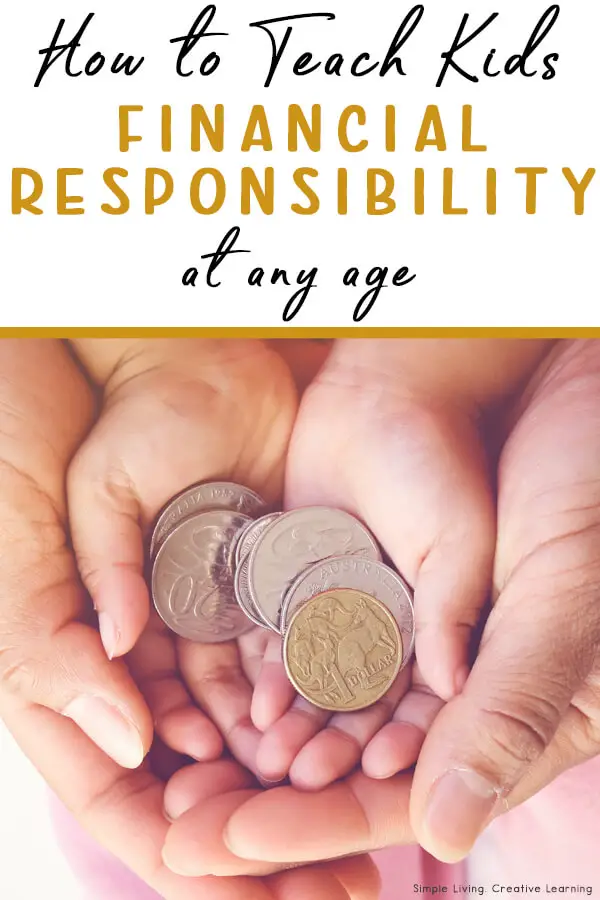Introduction
Teaching kids about money is an essential life skill that will set them up for success in the future. By instilling the value of frugal living at an early age, children can develop good financial habits that will benefit them throughout their lives. In this article, I will share some helpful tips on how to teach kids about money through frugal living.
Understanding the Value of Money
The first step in teaching kids about money is helping them understand the value of money. Instead of simply giving them an allowance, encourage them to earn their own money through chores or small jobs. By doing this, they will learn the significance of hard work and the value of a dollar.
Setting Financial Goals
Another important aspect of teaching kids about money is setting financial goals. Help them identify their desires and explain the importance of saving to achieve those goals. Whether it’s saving for a new toy or a future vacation, teaching them to prioritize and save for what they want will help instill discipline and delayed gratification.
Teach the Difference Between Needs and Wants
In today’s consumer-driven society, it is crucial to teach kids the difference between needs and wants. Help them understand that not all purchases are necessary and that sometimes it’s best to prioritize needs over wants. Encourage them to make thoughtful spending decisions and avoid impulsive purchases.
Make Budgeting a Game
Budgeting can be a daunting task for anyone, let alone for kids. Make it fun by turning it into a game. Give them a fixed amount of money each week and challenge them to allocate it wisely across different categories such as saving, spending, and giving. This game will teach them about budgeting and decision-making while making them more mindful of their money choices.
Encourage Smart Shopping Habits
Teach your kids the importance of price comparison and smart shopping habits. Show them how to research prices, look for deals, and use coupons. By being savvy shoppers, they will learn to stretch their money further and make the most of their budget.

Why is it important to teach kids about money?
As a parent, I believe it is crucial to teach kids about money from an early age. By instilling good financial habits and teaching them the value of frugal living, we are empowering them to make informed decisions and set themselves up for a secure future.
Building financial responsibility
Teaching kids about money fosters a sense of responsibility. When they understand that money is a limited resource, they learn the importance of budgeting and prioritizing their spending. It helps them differentiate between needs and wants, enabling them to make thoughtful choices and avoid unnecessary expenses.
Developing lifelong skills
Financial literacy is a skill that will benefit children throughout their lives. By teaching them how to make a budget, save money, and make smart financial decisions, we are equipping them with valuable tools to navigate the complexities of adulthood. These skills will empower them to manage their finances effectively and avoid falling into debt traps.
Cultivating an appreciation for hard work
When children are involved in money management, they learn the value of hard work. By encouraging them to earn pocket money through chores or small jobs, they start to understand that money is earned through effort and dedication. This appreciation for hard work will motivate them to strive for success in the future and develop a strong work ethic.
Fostering independence
Teaching kids about money also promotes independence. When children have a basic understanding of financial concepts, such as budgeting and saving, they become more self-reliant. They are better prepared to make financial decisions on their own, minimizing the need for constant support or assistance.
teaching kids about money forms a critical foundation for a successful financial future. By building financial responsibility, developing lifelong skills, cultivating an appreciation for hard work, and fostering independence, we are empowering our children to be financially savvy individuals who can navigate the world of money with confidence.
Key principles of frugal living
Budgeting and tracking expenses
When it comes to teaching kids about money, one of the most important principles is the art of budgeting. This involves setting a limit on how much money can be spent in certain areas, such as entertainment or clothes, and sticking to it. By introducing kids to budgeting early on, they develop an understanding of the value of money and the importance of making thoughtful decisions before spending it.
Differentiating between wants and needs
Understanding the difference between wants and needs is crucial in frugal living. As parents, it is essential to teach children that while it’s alright to want things, it’s even more important to prioritize their needs. By doing so, kids learn to make conscious choices and avoid impulsive spending. They are more likely to think twice before splurging on unnecessary items.
Smart shopping and comparison
Another significant aspect of frugal living is teaching kids about smart shopping. This includes comparing prices, researching for the best deals, and understanding the difference between value and cost. Encourage them to look for sales, use coupons, and consider second-hand options. By doing so, children learn to be savvy consumers and make informed decisions about their purchases.
Resourcefulness and creativity
Frugal living also emphasizes resourcefulness and creativity. Teach kids to repurpose and recycle items instead of always buying something new. Encourage them to find alternative ways to have fun or solve problems without spending money. This cultivates a sense of independence and ingenuity, helping them develop skills that will benefit them throughout their lives.
Delayed gratification
Finally, frugal living teaches kids the art of delayed gratification. Rather than buying something immediately, teach them to save and wait for it. This helps develop patience, discipline, and a deep appreciation for the things they eventually acquire. By teaching kids to delay gratification, they learn the value of hard work and the rewards that come with it.
Incorporating these principles into your child’s upbringing can help them develop a better understanding of money and instill lifelong habits of thriftiness. By teaching them the art of frugal living, you are equipping them with the tools they need to make responsible financial decisions and live a more fulfilling life in the long run.
Budgeting basics for kids
Teaching kids about money is an essential life skill that will help them make informed financial decisions in the future. As a parent, it is important to start teaching your kids about money at an early age. One approach that can be very effective is adopting a frugal lifestyle and incorporating frugal living tips into your child’s financial education. In this section, I will discuss some budgeting basics for kids, including understanding income and expenses, setting financial goals, creating a budget, and tracking expenses.
Understanding income and expenses
Start by explaining to your kids the concept of income and expenses. Income refers to the money that comes into the household, such as allowance or money earned from jobs or chores. Expenses, on the other hand, are the money spent on various things, such as toys, snacks, or clothes. Help your child understand that income needs to be greater or equal to expenses in order to have a balanced budget.
Encourage your child to set financial goals. Whether it’s saving for a new toy or a day out with friends, having goals helps children understand the value of money and the importance of prioritizing needs and wants.
Creating a budget
A budget is a powerful tool for managing money. Show your child how to create a budget by listing their income and expenses. Teach them to allocate money for different categories, such as saving, spending, and giving. This will help them develop good money management habits and avoid overspending.
Tracking expenses
Teach your child the importance of tracking expenses. From a young age, they can keep a record of their spending and analyze where their money is going. This will help them become conscious consumers and make thoughtful purchasing decisions.
By teaching your child these budgeting basics, you are setting them up for a lifetime of financial success. It’s never too early to instill good money habits, and a frugal approach can be a valuable tool in teaching kids about money. So start today and watch your child grow into a financially savvy individual.

Teaching Kids About Money: A Frugal Approach
As a parent, one of the most important skills I want to teach my children is how to manage their money wisely. By starting early and introducing them to the concept of saving, I believe I am setting them up for a frugal lifestyle that will serve them well throughout their lives.
Introducing the concept of saving
From a young age, I have explained to my kids the importance of saving money. I have made it a habit to involve them in household budgeting discussions, using real-life examples to help them understand the value of money. By taking them to the grocery store and comparing prices, they learn that making smart choices can result in savings.
Setting up a savings account
To further instill the habit of saving, I opened savings accounts for each of my children at a local bank. This not only helps them see their money grow over time, but it also teaches them about the banking system and the concept of interest. We regularly review their account statements together, discussing how their savings have increased.
Saving for short-term and long-term goals
Teaching my kids about setting goals has been an important aspect of their financial education. Whether it’s saving up for a new toy or a college education, I encourage them to set both short-term and long-term goals. By doing so, they understand the importance of delayed gratification and learn to prioritize their spending.
Encouraging regular saving habits
Consistency in saving is key, and I make sure to emphasize this to my children. We have developed a routine where they set aside a portion of their allowance and any money they receive as gifts. By making it a regular habit, saving becomes second nature to them.
by introducing the concept of saving, setting up savings accounts, teaching them to save for short-term and long-term goals, and encouraging regular saving habits, I am confident that I am equipping my children with the frugal mindset they need to thrive in the future.

Earning money through chores and jobs
Assigning age-appropriate chores
Teaching kids about money begins at home with age-appropriate chores. By assigning practical tasks around the house, children can learn the value of work and develop a sense of responsibility. Younger kids can help with simple tasks like setting the table or making their beds, while older kids can take on more challenging responsibilities such as watering plants or doing laundry. It’s important to remember to reward their efforts with a small allowance as it encourages them to continue working towards their goals.
Teaching the value of work
One of the key components of teaching kids about money is instilling the importance of hard work. By explaining the connection between work and money, children begin to understand that money is earned, not freely given. It is crucial to discuss the concept of a job and the effort required to earn a paycheck. This knowledge will not only motivate them to work harder but also help them develop good work ethics that will benefit them in the future.
Exploring part-time job opportunities
As children grow older and more independent, they can venture into part-time jobs to earn extra money. Babysitting, pet sitting, or neighborhood lawn mowing are excellent options for teenagers to gain work experience. It teaches them financial independence, time management skills, and the value of a good work-life balance. Encourage your child to explore these opportunities and guide them through the process of finding suitable part-time jobs that align with their interests and abilities.
Managing earned income
Teaching your children about money management is equally important as teaching them how to earn it. Help them create a budget and explain the importance of saving a portion of their income. Encourage them to set savings goals and save for future expenses or desired items. Additionally, introduce the concept of charitable giving to instill the value of helping others in need.
By incorporating these frugal living tips into our children’s lives, we can set them on a path towards financial literacy and independence. By assigning age-appropriate chores, teaching the value of work, exploring part-time job opportunities, and guiding them in managing their earned income, we equip them with the necessary tools to navigate their financial future. Let’s empower our kids with the knowledge and skills they need to make wise financial decisions, and watch them blossom into financially responsible adults.
Teaching Kids About Spending Wisely
Teaching children about money management and frugal living is an essential skill that will benefit them throughout their lives. As a frugal lifestyle advocate and the founder of FrugalDude.org, I believe it’s crucial to instill these habits in children from an early age. By teaching them about spending wisely, we can empower them to make informed choices and achieve financial stability in the future.
Differentiating between Needs and Wants
One of the fundamental lessons in teaching kids about money is helping them understand the difference between needs and wants. I explain to children that needs are essential for survival, such as food, clothing, and shelter, while wants are things we desire but can live without. By prioritizing their needs over their wants, children learn to make thoughtful spending decisions.
Comparing Prices and Making Informed Choices
Teaching children to compare prices and make informed choices is another valuable lesson. I encourage them to research prices before making a purchase and explain how different options can vary in cost and quality. By involving kids in budgeting decisions, such as comparing prices at the grocery store or discussing the value of used items versus new ones, they develop critical thinking skills and learn to be thrifty consumers.
Delaying Gratification
Delaying gratification is an essential aspect of teaching kids about frugal living. I often share personal stories to illustrate the benefits of saving money for future goals. By encouraging children to save a portion of their allowance or earnings, they learn patience, the value of hard work, and how to set achievable financial goals.
Avoiding Impulse Purchases
Impulse purchases can quickly derail frugal habits. I emphasize to children the importance of thinking carefully before making a purchase, especially when it’s not part of their planned budget. By teaching them the power of waiting and considering their options, children learn to resist impulsive buying and make more intentional choices.
by teaching kids about spending wisely, differentiating between needs and wants, comparing prices, delaying gratification, and avoiding impulse purchases, we can empower children to develop frugal habits that will serve them well into adulthood. Through these lessons, children learn the value of money, become conscious consumers, and develop responsible financial behaviors.

Discussing debt and credit with kids
As a parent, one of the most important lessons I believe I can teach my children is the value of money and how to manage it wisely. It’s crucial for them to understand the concepts of debt and credit from an early age, so they can make informed financial decisions in the future. Here are some key points I focus on when discussing debt and credit with my kids:
Explaining the concept of borrowing money
I start by explaining to my kids that sometimes people need to borrow money to purchase things they need or want, such as a house or a car. I emphasize that borrowing money means they will need to pay it back later, usually with interest. By using real-life examples, like taking out a loan for a family vacation, I make sure they understand the concept of borrowing.
Discussing responsible credit card use
Next, I teach my kids about credit cards and how they work. I explain that credit cards allow people to buy things and pay for them later, but it’s important to use them responsibly. I highlight the importance of paying off the credit card balance in full each month to avoid interest charges. By discussing the potential consequences of excessive credit card debt, I help them understand the importance of using credit cards wisely.
Understanding interest and consequences of debt
To make the concept of interest more relatable, I use examples like borrowing money from a friend and having to give them a little extra as a thank-you. I explain that interest works in a similar way, as a way for lenders to make money. I also discuss the consequences of accumulating too much debt, such as having to pay more in interest and having less money available for other things they may want or need.
Avoiding debt traps
Lastly, I teach my kids about the importance of avoiding debt traps. I explain that some loans or credit cards may have high interest rates or hidden fees, making it difficult to pay off the debt. I encourage them to always read the fine print and ask questions before entering into any financial agreement. By instilling this sense of caution, I want to empower my children to make smart choices and avoid unnecessary debt.
By discussing debt and credit with my kids and providing real-life examples, I aim to equip them with the knowledge and skills to make responsible financial decisions in the future. It’s never too early to start teaching kids about money, and by following these tips, I believe we can raise financially savvy individuals who are prepared for the challenges and opportunities that managing money brings.

Teaching kids about wise consumer choices
Teaching children about money at a young age is essential for their financial literacy and future success. By instilling frugal values early on, we can help them understand the importance of making wise consumer choices. Here are some practical tips to teach kids about frugal living and encourage them to be mindful shoppers.
Promoting mindful shopping
It’s crucial to teach children the difference between wants and needs. By emphasizing the value of money and the importance of prioritizing purchases, we can foster a mindset of mindful shopping. Encourage them to carefully consider whether they truly need an item before making a purchase. This helps develop critical thinking skills and prevents impulsive buying.
Encouraging second-hand purchases
Another way to teach children about frugal living is by promoting the idea of buying second-hand items. Explain to them the benefits of reusing and recycling, as well as the potential cost savings. Take them to thrift stores or consignment shops where they can find great deals on gently used clothing and toys. Not only does this introduce them to the concept of responsible consumerism, but it also teaches them the value of money.
Exploring DIY alternatives
Engaging kids in do-it-yourself (DIY) projects not only nurtures their creativity but also teaches them the satisfaction of making something themselves. Encourage them to explore DIY alternatives for items they need or want. Together, you can create homemade gifts, decorations, or even simple household items, saving money in the process.
Appreciating the value of experiences
Teach children that experiences can be just as meaningful, if not more, than material possessions. Instead of focusing solely on purchasing things, encourage them to invest in experiences such as family outings, trips, or shared adventures. This teaches them the value of memories and relationships, which often last longer than material possessions.
By adopting a frugal approach and teaching kids these valuable lessons, we can help them develop lifelong habits of wise consumer choices. Empowering children with financial literacy from an early age is a gift that will serve them well throughout their lives. Let’s start teaching our little ones about the importance of frugal living today.
Investing basics for kids
When it comes to teaching kids about money, it’s important to introduce them to the concept of investing from an early age. By explaining how investing works, children can learn about the importance of setting goals and making decisions that will help them achieve financial success in the long run.
Exploring different investment options
Once children have a basic understanding of investing, it’s time to explore different investment options. This can include teaching them about stocks, bonds, mutual funds, and other types of investments. By giving them a comprehensive overview, children can begin to develop a well-rounded understanding of how different investment strategies work.
Teaching long-term financial planning
One of the key aspects of investing is long-term financial planning. Children need to understand that investing is not a quick fix, but rather a long-term commitment that requires patience and discipline. By explaining the importance of saving and investing for the future, kids can begin to develop good financial habits that will serve them well throughout their lives.
Understanding risks and rewards
Investing is not without its risks, and it’s crucial to teach kids about the potential rewards and pitfalls that come with it. By explaining the concept of risk and reward, children can learn to make informed decisions and understand that there is always a degree of uncertainty when it comes to investing.
teaching kids about investing is an essential part of their financial education. By introducing them to the concept, exploring different investment options, teaching long-term financial planning, and helping them understand risks and rewards, children can develop valuable skills that will benefit them in their future endeavors. So let’s start early and empower our kids to become financially savvy individuals.
The role of parents in teaching frugal living
Lead by example
As parents, it’s essential for us to lead by example when it comes to teaching our kids about money and frugal living. Children learn through observation, so it’s crucial for us to demonstrate responsible financial habits. This means being mindful of our spending and making sound financial decisions. By showing them that we prioritize saving and budgeting, we teach them the importance of being frugal.
Involving kids in financial decisions
One effective way to teach kids about frugal living is by involving them in financial decisions. This can be as simple as including them in the meal planning process and asking for their input on ways to save money while grocery shopping. By giving them a voice in financial matters, they develop a sense of responsibility and learn to think critically about spending choices.
Open communication about money
Having open and honest conversations about money is key to teaching kids about frugal living. We must explain to them the value of money, how it is earned, and the importance of saving. Encouraging them to ask questions and providing answers will deepen their understanding of financial concepts. Moreover, discussing family financial goals and involving them in the decision-making process will foster a sense of accountability and teach them how to set financial goals of their own.
Reinforcing frugal values
Consistency is vital in teaching children about frugal living. It’s essential to reinforce frugal values by consistently practicing and discussing them. This includes encouraging them to comparison shop, reuse items, and find creative ways to save money. By consistently reinforcing these values, we instill in them a long-lasting understanding and appreciation for frugal living.
By adopting these frugal living practices and involving our children in our financial decisions, we are equipping them with the necessary knowledge and skills to become financially responsible adults. Teaching kids about money and frugal living is an ongoing process, and by setting positive examples, having open conversations, and consistently reinforcing frugal values, we can empower our kids to make smart financial choices throughout their lives.
Conclusion
In conclusion, teaching kids about money and instilling a frugal approach in their lives is essential for their financial well-being in the future. By introducing them to the concepts of saving, budgeting, and avoiding unnecessary expenses from an early age, we are setting them up for success.
Saving for the Future
One of the key lessons in teaching kids about money is the importance of saving. Encouraging them to set aside a portion of their allowance or earnings in a piggy bank or savings account not only teaches them the value of delayed gratification but also helps them develop a savings habit that will benefit them in the long run. By sharing stories about the power of compound interest and how small savings can grow over time, we can inspire our kids to become lifelong savers.
Budgeting Basics
Another vital aspect of frugal living is budgeting. Teaching kids how to create a simple budget can help them understand the value of money and make wise spending decisions. By involving them in the family budgeting process, such as making grocery lists and comparing prices, we can empower our kids to be responsible consumers. This hands-on experience will not only teach them about financial responsibility but also sharpen their critical thinking skills.
It’s crucial to teach kids about the dangers of impulse buying and how to differentiate between needs and wants. By discussing the consequences of impulsive spending and encouraging them to pause and think before making a purchase, we are teaching them the importance of prioritizing their needs and making wise choices. This will help them develop a frugal mindset and avoid unnecessary expenses.
By implementing these frugal living tips and teaching our kids about money, we are equipping them with valuable life skills that will serve them well in the future. So let’s start early and instill the values of saving, budgeting, and mindful spending in our kids, ensuring a financially secure and responsible future for them. Remember, these lessons will not only benefit them today but will also shape their financial habits for years to come.
